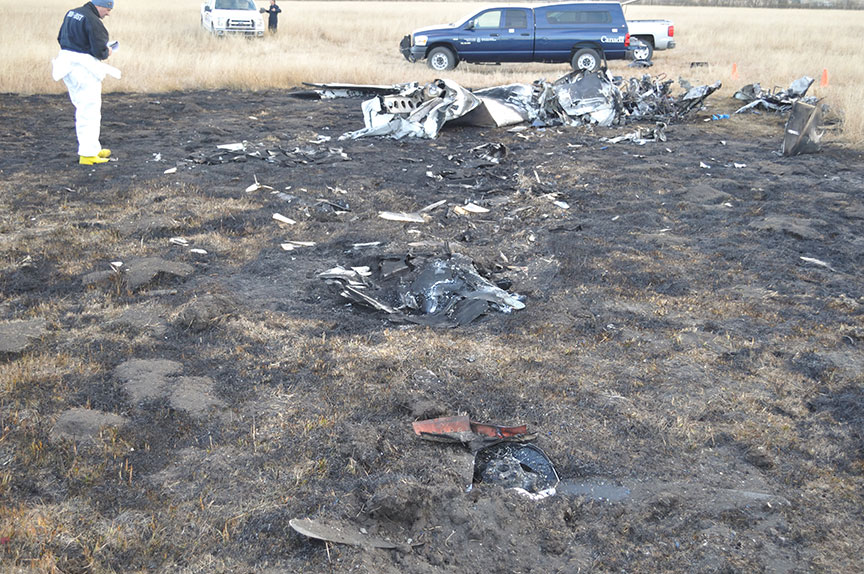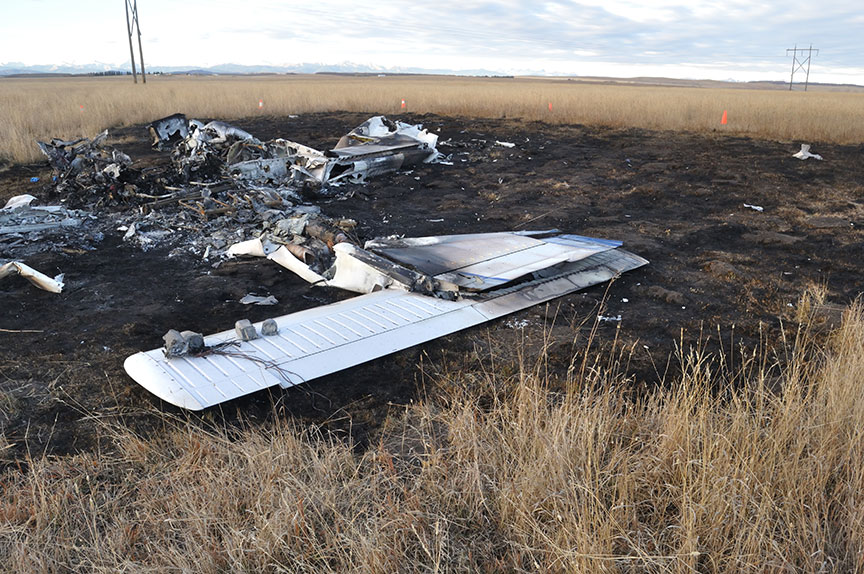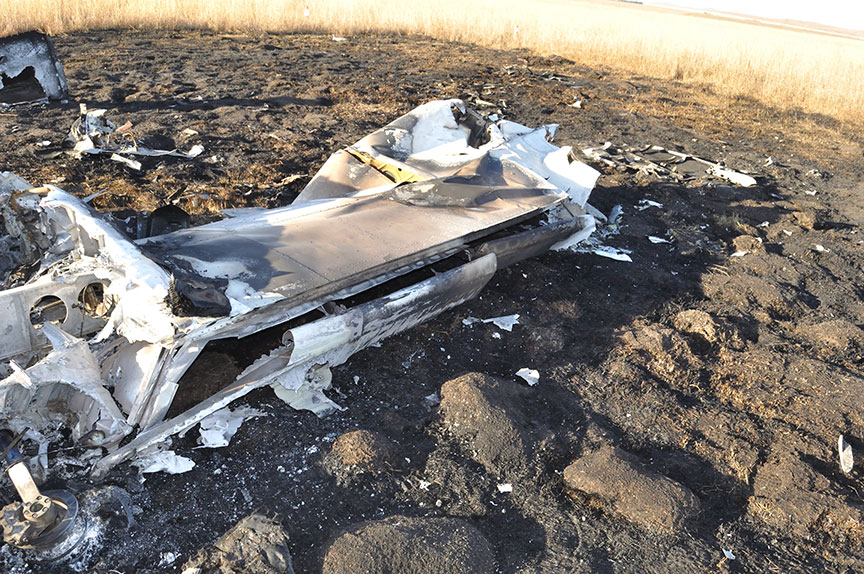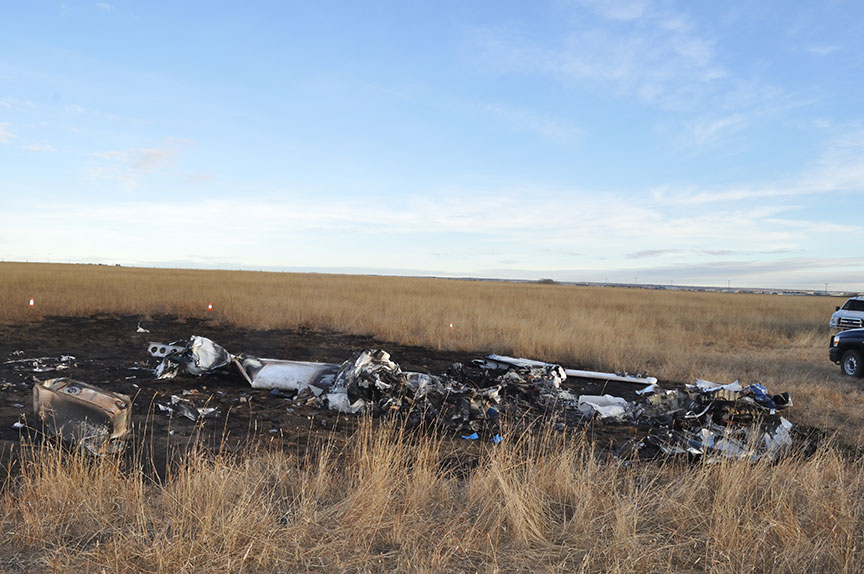Loss of control and collision with terrain
Springbank Air Training College
Piper PA-34-200T Seneca II, C-GCCM
Calgary/Springbank Airport, Alberta, 0.8 nm S
The occurrence
At 0949 Mountain Daylight Time on 26 October 2017, the Springbank Air Training College Piper PA-34-200T Seneca II (serial number 34-7570103, registration C-GCCM) departed from Runway 17 at Calgary/Springbank Airport (CYBW), Alberta, with a student pilot and flight instructor on board. The purpose of the flight was to conduct a multi-engine training flight to the practice area. Approximately 70 seconds after takeoff and 0.8 nautical miles south of Runway 17, the aircraft rolled to the left, entered a steep, descending left turn, and collided with terrain. There was a post-impact fire, and the aircraft was destroyed. The 2 occupants were fatally injured. The 406 MHz emergency locator transmitter did not activate. Motorists on the nearby Trans-Canada Highway who witnessed the accident arrived on scene in less than 1 minute.
Media materials
News release
Loss of control during a simulated engine failure led to fatal collision with terrain near the Calgary/Springbank Airport, Alberta, in October 2017
Read the news release
Deployment notice
TSB deploys a team of investigators to Springbank Airport in Calgary, Alberta, following a small aircraft accident
The Transportation Safety Board of Canada (TSB) is deploying a team of investigators to Springbank Airport, Alberta, following an occurrence involving a small aircraft. The TSB will gather information and assess the occurrence.
Investigation information
Download high-resolution photos from the TSB Flickr page.
Class of investigation
This is a class 3 investigation. These investigations analyze a small number of safety issues, and may result in recommendations. Class 3 investigations are generally completed within 450 days. For more information, see the Policy on Occurrence Classification.
TSB investigation process
There are 3 phases to a TSB investigation
- Field phase: a team of investigators examines the occurrence site and wreckage, interviews witnesses and collects pertinent information.
- Examination and analysis phase: the TSB reviews pertinent records, tests components of the wreckage in the lab, determines the sequence of events and identifies safety deficiencies. When safety deficiencies are suspected or confirmed, the TSB advises the appropriate authority without waiting until publication of the final report.
- Report phase: a confidential draft report is approved by the Board and sent to persons and corporations who are directly concerned by the report. They then have the opportunity to dispute or correct information they believe to be incorrect. The Board considers all representations before approving the final report, which is subsequently released to the public.
For more information, see our Investigation process page.
The TSB is an independent agency that investigates air, marine, pipeline, and rail transportation occurrences. Its sole aim is the advancement of transportation safety. It is not the function of the Board to assign fault or determine civil or criminal liability.



